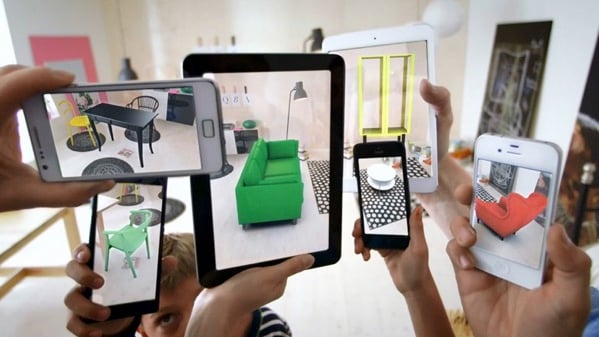AR has been in the market since a long time. Although, it was never a celebrated technology back in those days, it just gained some grounds in recent years. Following are the few sequence of events which prompted the popularity of AR today:
AR during the 1960s: Ivan Sutherland and Bob Sproull made a first head-mounted presentation in 1968. They considered it The Sword of Damocles. Clearly, it was an uneven gadget that showed primitive PC designs.
AR during the 1970s: In 1975 Myron Krueger made Videoplace – an artificial reality research center. The researcher imagined the communication with advanced stuff by human developments. This idea later was utilized for specific projectors, camcorders, and onscreen silhouettes.
AR during the 1980s: Steve Mann built up a first compact PC called EyeTap, intended to be worn before the eye in 1980. It recorded the scene to superimposed consequences for it later, and demonstrate to everything to a client who could likewise play with it by means of head movements. In 1987 Douglas George and Robert Morris built up the model of a heads-up presentation (HUD). It showed cosmic information over the real sky.
AR during the 1990s: The year 1990 denoted the introduction of the "augmented reality" term. It previously showed up in crafted by Thomas Caudell and David Mizell – Boeing organization analysts. In 1992, Louis Rosenberg of the US Air Force made the AR framework called "Virtual Fixtures". In 1999, a gathering of researchers driven by Frank Delgado and Mike Abernathy tried new route programming, which created runways and streets information from a helicopter video.
AR during the 2000s: In 2000 a Japanese researcher Hirokazu Kato created and distributed ARToolKit – an open-source SDK. Later it was adjusted to work with Adobe. In 2004 Trimble Navigation exhibited an outside head protector mounted AR framework. In 2008 Wikitude made the AR Travel Guide for Android cell phones.
AR in present days: In 2013 Google beta tried the Google Glass – with internet connection by means of Bluetooth. In 2015 Microsoft introduced two fresh out of the box new technologies: Windows Holographic and HoloLens (an AR goggles with bunches of sensors to show HD multi-dimensional images). In 2016 Niantic came up with the Pokemon Go game for smart phones. The application blew the gaming business up and earned $2 million out of a simply first week.







0 Comments
Please do not enter any spam link in the comments box.